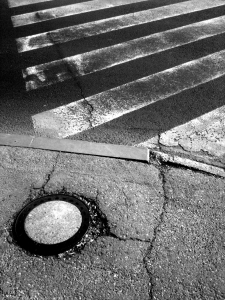 Two pedestrians died on Sunday, March 25 after crossing the street mid-block. SFGate reports that Thomas Ferguson (45) was crossing Lombard Street between Van Ness and Franklin when a car struck him. Ferguson died on the scene. Earlier that day, a man was hit by a Muni bus when he emerged between two parked cars to cross Fillmore Street. KTVU.com reports that he was rushed to the hospital, but declared dead shortly thereafter.
Two pedestrians died on Sunday, March 25 after crossing the street mid-block. SFGate reports that Thomas Ferguson (45) was crossing Lombard Street between Van Ness and Franklin when a car struck him. Ferguson died on the scene. Earlier that day, a man was hit by a Muni bus when he emerged between two parked cars to cross Fillmore Street. KTVU.com reports that he was rushed to the hospital, but declared dead shortly thereafter.
According to a study by UCSF, Profile of Injury in San Francisco (2004), more pedestrians died in San Francisco over the last ten years than motor vehicle occupants, while the state average varies from 17.2%-20.2% per year. Moreover, the national average for pedestrian fatalities among all crash fatalities is much lower at around 12%. Part of the higher rate is due to the urban nature of many California cities, including San Francisco. For example, the most pedestrian fatalities and injuries alike were concentrated in downtown San Francisco and other high traffic areas, as shown in the study named Cost of Auto versus Pedestrian Injuries in San Francisco, 2004-2008.
The logical conclusion is that areas with more pedestrian deaths require more measures to protect pedestrians and encourage safer behavior by both pedestrians and drivers. In 2002, San Francisco was one of three cities, along with Las Vegas and Miami, to be chosen for a PedSafe Study because of the high rate of pedestrian fatalities. The study tested various traffic signs and street markings to identify the most effective methods to promote pedestrian safety.
The most effective measures included flashing beacons at crosswalks without traffic signals, signs that reminded drivers to watch out for pedestrians, and head start crossing for pedestrians at intersections where cars make relatively more unprotected left turns.
An article by Wray Herbert on the Association for Psychological Science website, cites a University of London study that found the reason children under 15 years old are more likely to be injured by cars, is not limited to lack of attention to potential dangers. In fact, children are less likely to see oncoming vehicles at all because they are physically smaller. In addition, their brains have a harder time than adults judging the rate at which cars driving at different speeds will approach them.
These two studies help root out the causes of pedestrian injuries and deaths at all ages. One reason appears to be the visibility of both cars and pedestrians. Flashing beacons, head start intersections, and raised curbs help improve the visibility of pedestrians to vehicles, and also help pedestrians assess possible dangers when traversing the street. The above accidents also demonstrate that crossing in designated intersections is important, because pedestrians are more visible to vehicles at crosswalks.
Another reason highlighted by both the March 25 crashes and the studies is the issue of right of way. Although Californian pedestrians always have the right of way by law, traffic measures are implemented to make driving, walking, and biking safer and require that pedestrians sometimes temporarily give up the right of way for their own safety. Pedestrians often cross against lights and without the protection of crosswalks because they are sure they can make it across in time. As the tragic accidents at Lombard Street and Fillmore Street show, this is a dangerous state of mind. However, pedestrians are also struck when they obey all traffic laws. For instance, cars make premature left and right turns through intersections where they are supposed to yield to pedestrians, because, similar to the previous example, drivers think they can “make it” before the pedestrian reaches the end of the intersection. Thus, the PedSafe Study found that signs, markers, and head start intersections successfully reminded many drivers to yield to pedestrians.
Continue Reading ›
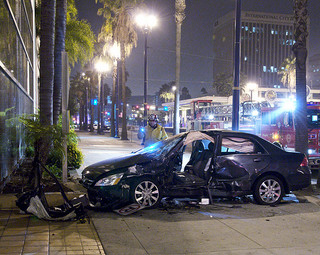 The first day of 2013 was marked by tragedy for a pedestrian and the occupants of a vehicle travelling in the Mission District. According to the San Francisco Chronicle, the incident began fifteen minutes prior to the ultimate collision when police responded to reports of gunshots fired from a vehicle at the Valencia Gardens housing project, located at 14th and Guerro streets. Shortly thereafter, police spotted and pulled over a black Chevrolet Impala matching witness descriptions of the suspect vehicle. As officers approached, the driver sped off, heading east on 21st Street and running two intersections before colliding with a white Toyota proceeding north on South Van Ness Avenue. The impact caused the Toyota to spin into the intersection, hitting a pedestrian before landing in front of a liquor shop.
The first day of 2013 was marked by tragedy for a pedestrian and the occupants of a vehicle travelling in the Mission District. According to the San Francisco Chronicle, the incident began fifteen minutes prior to the ultimate collision when police responded to reports of gunshots fired from a vehicle at the Valencia Gardens housing project, located at 14th and Guerro streets. Shortly thereafter, police spotted and pulled over a black Chevrolet Impala matching witness descriptions of the suspect vehicle. As officers approached, the driver sped off, heading east on 21st Street and running two intersections before colliding with a white Toyota proceeding north on South Van Ness Avenue. The impact caused the Toyota to spin into the intersection, hitting a pedestrian before landing in front of a liquor shop.  San Francisco Injury Lawyer Blog
San Francisco Injury Lawyer Blog



 You can almost feel the excitement in the air as the kids begin counting down the hours until the can step into their costumes and out to the street for a night of trick-or-treating and the candy buzz to follow. Parents are looking forward to pulling out their cameras to document this year’s costume and other households are getting ready to greet the kids who ring the bell and see this year’s variety of cute, scary, and creative outfits. Before the fun begins, our San Francisco injury law firm wants to take a moment to remind readers about
You can almost feel the excitement in the air as the kids begin counting down the hours until the can step into their costumes and out to the street for a night of trick-or-treating and the candy buzz to follow. Parents are looking forward to pulling out their cameras to document this year’s costume and other households are getting ready to greet the kids who ring the bell and see this year’s variety of cute, scary, and creative outfits. Before the fun begins, our San Francisco injury law firm wants to take a moment to remind readers about 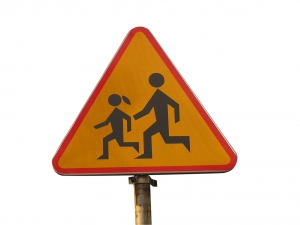 Two Adults and One Child Injured in School Zone at Turner Elementary
Two Adults and One Child Injured in School Zone at Turner Elementary 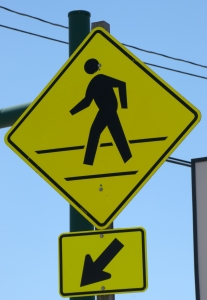 Our
Our  The
The 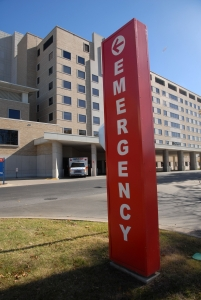 A recent report in The San Francisco Chronicle served as a particular reminder of the fact that every victim lost in a traffic fatality had his or her own story. Sena Putra, a 47 year old Oakland resident, was returning to work after lunch on Thursday. He was crossing 13th Street in the South of Market neighborhood of San Francisco when he was hit by a gasoline tanker truck as it turned onto 13th from Folsom Street. Investigators reported that Putra was crossing in a crosswalk and had a green light. Putra died at the accident scene. The driver of the truck did remain at the scene and cooperated with police. As of the time of the report, no arrest had been made.
A recent report in The San Francisco Chronicle served as a particular reminder of the fact that every victim lost in a traffic fatality had his or her own story. Sena Putra, a 47 year old Oakland resident, was returning to work after lunch on Thursday. He was crossing 13th Street in the South of Market neighborhood of San Francisco when he was hit by a gasoline tanker truck as it turned onto 13th from Folsom Street. Investigators reported that Putra was crossing in a crosswalk and had a green light. Putra died at the accident scene. The driver of the truck did remain at the scene and cooperated with police. As of the time of the report, no arrest had been made. Two pedestrians died on Sunday, March 25 after crossing the street mid-block.
Two pedestrians died on Sunday, March 25 after crossing the street mid-block. 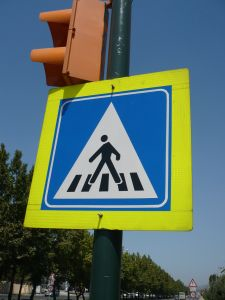 Serving as a
Serving as a